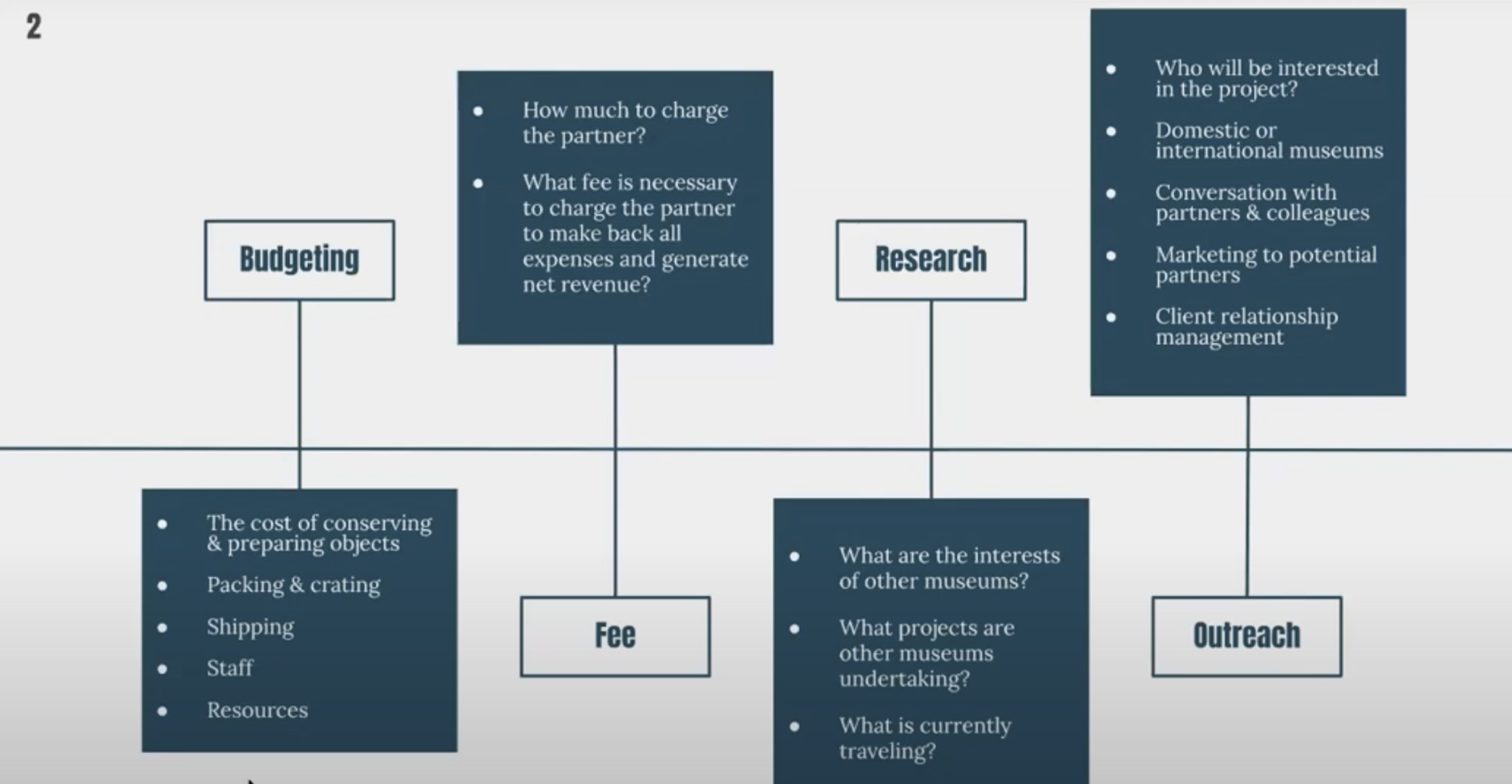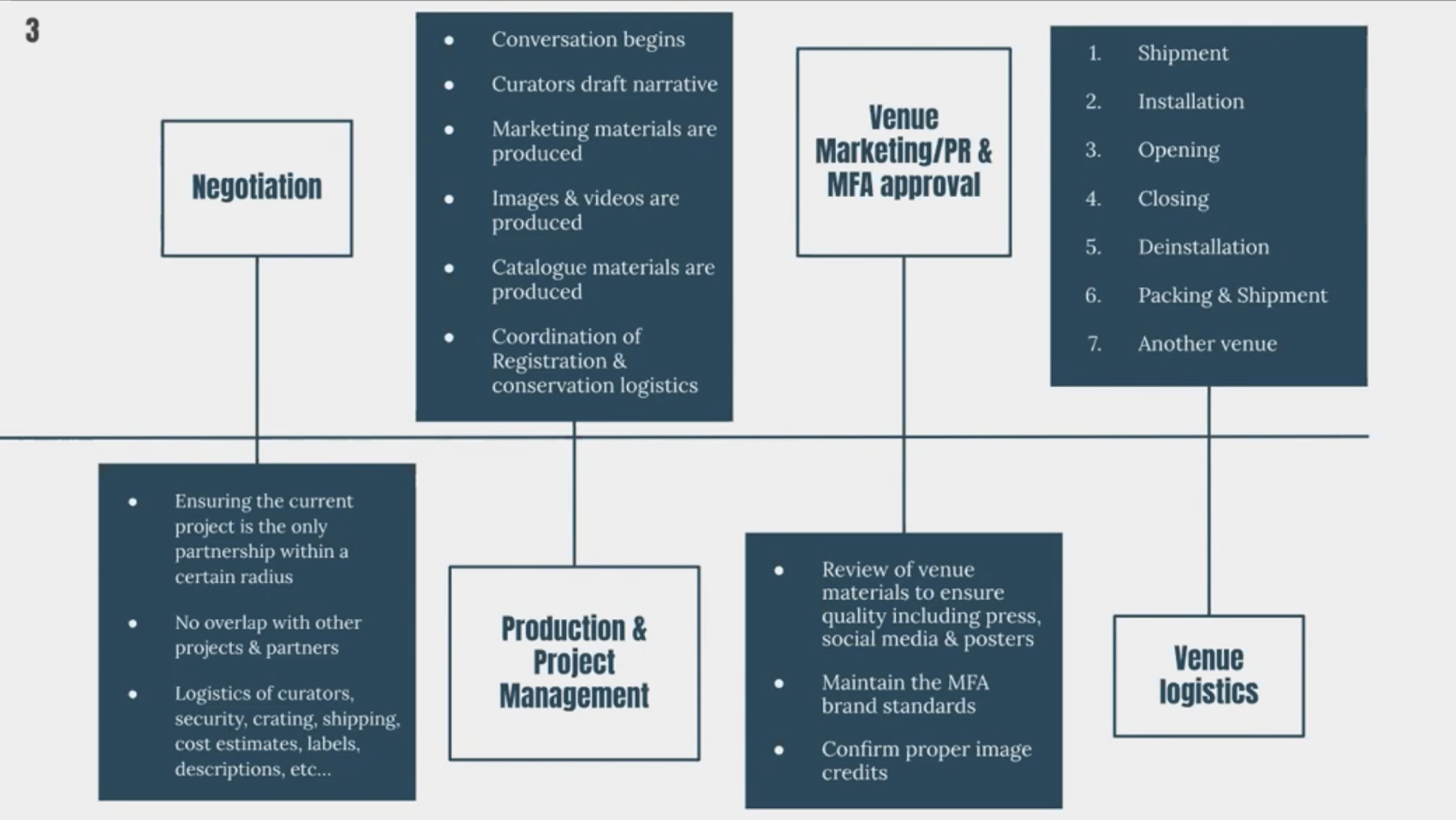User Stories:
“As an Exhibition Manager, I want access to a set of curatorial templates that are customizable, so I can make exhibition planning stress free and encourage team collaboration”
“As a Curatorial Gallery Manager, I want to be able to access and edit all curatorial materials in one place, so I can be more efficient and maximize productivity and creativity”
After conducting user and market studies, I decided to highlight the main features of the product. I then converted the User Stories into User Flows to illustrate how the user would interact with the product.
The Curatorial work flow:
The curatorial process typically begins with identifying a theme or concept for an exhibition, followed by extensive research to gather relevant artworks or artifacts. Curators collaborate with artists, collectors, and institutions to select pieces that align with the exhibition's narrative and objectives. Once artworks are chosen, curators negotiate loans, acquisitions, and transportation logistics. They work closely with exhibition designers to plan the layout and presentation of the artworks within the gallery space, considering factors like lighting, flow, and accessibility. Throughout the process, curators engage in scholarly analysis, writing catalog essays, and developing educational materials to contextualize the exhibition for diverse audiences. Finally, they oversee the installation and opening of the exhibition, ensuring that the vision and intent behind the curated collection are effectively communicated to visitors.
In addition to the artistic and conceptual aspects, curators are also responsible for managing budgets and negotiating leases or rental agreements for exhibition spaces. They work closely with financial administrators to allocate funds for various aspects of the exhibition, including transportation, installation, marketing, and personnel expenses. Curators must adhere to budgetary constraints while still striving to achieve the highest quality presentation possible. Negotiating leases or rental agreements involves securing appropriate exhibition spaces within budgetary constraints and ensuring that the venues meet the necessary logistical requirements for the display of artworks or artifacts. This entails considering factors such as size, location, accessibility, security, and environmental conditions to create an optimal viewing experience for visitors while also safeguarding the integrity of the artworks.
Typical workflow example of Art institutions:


